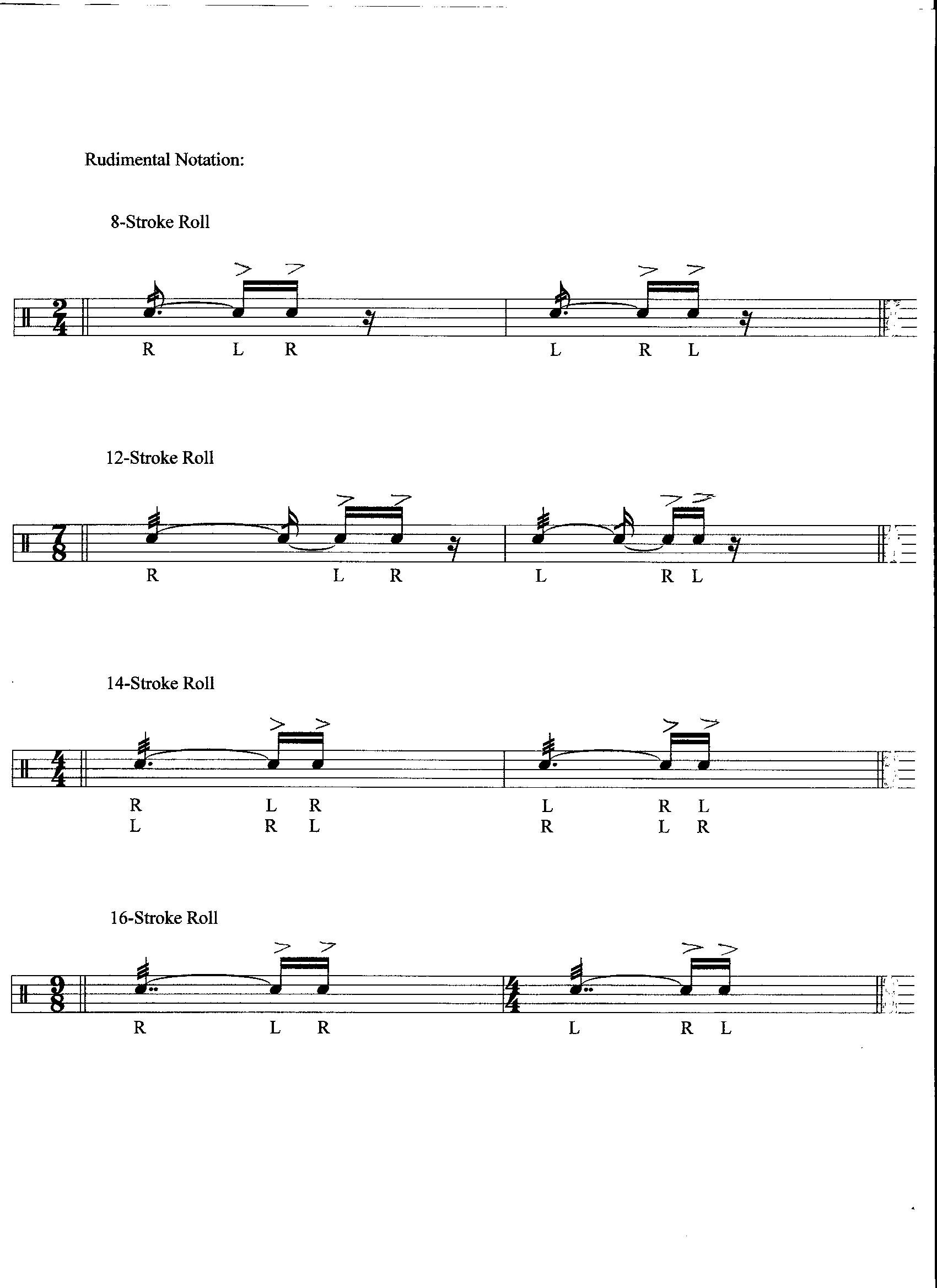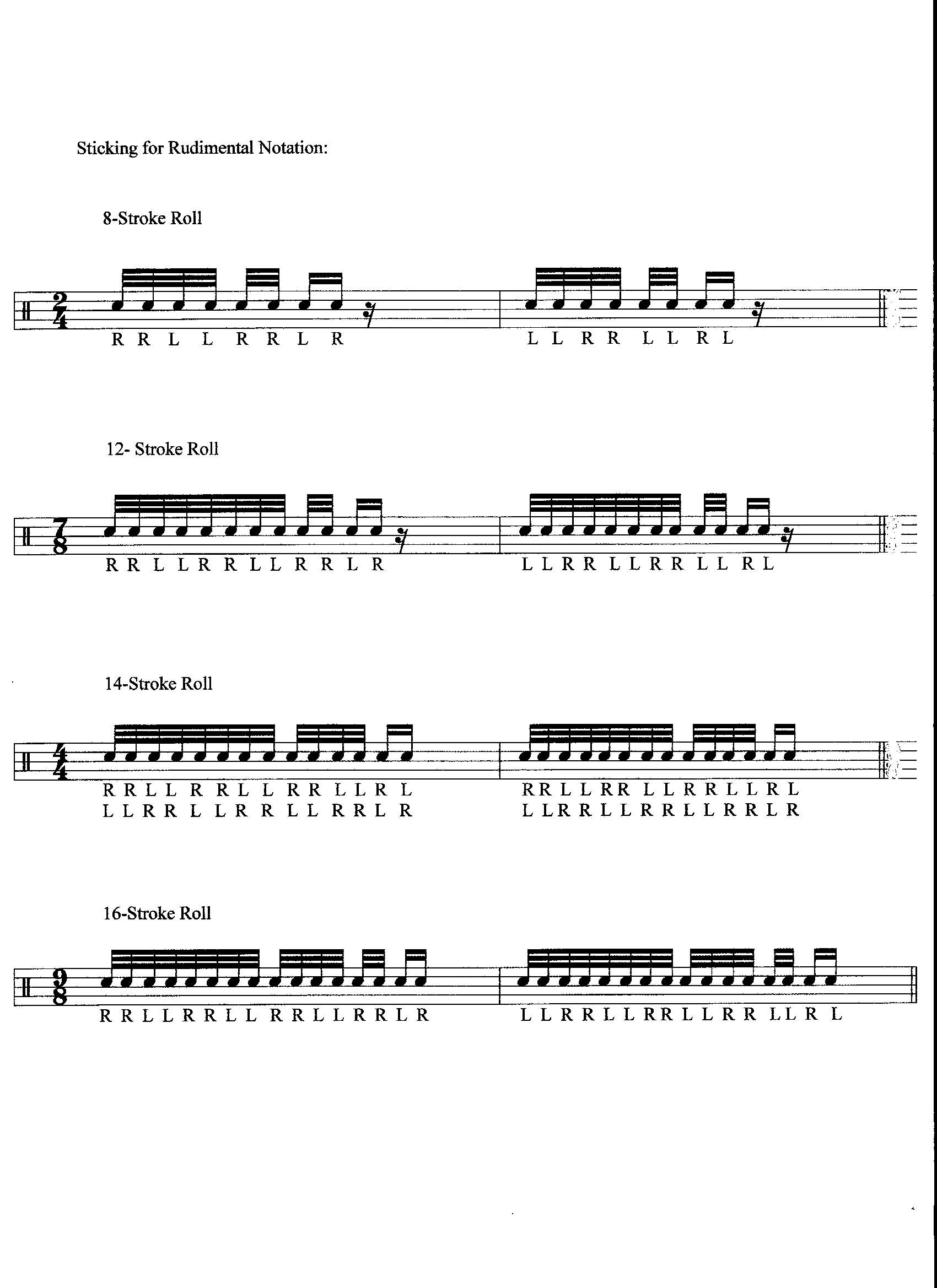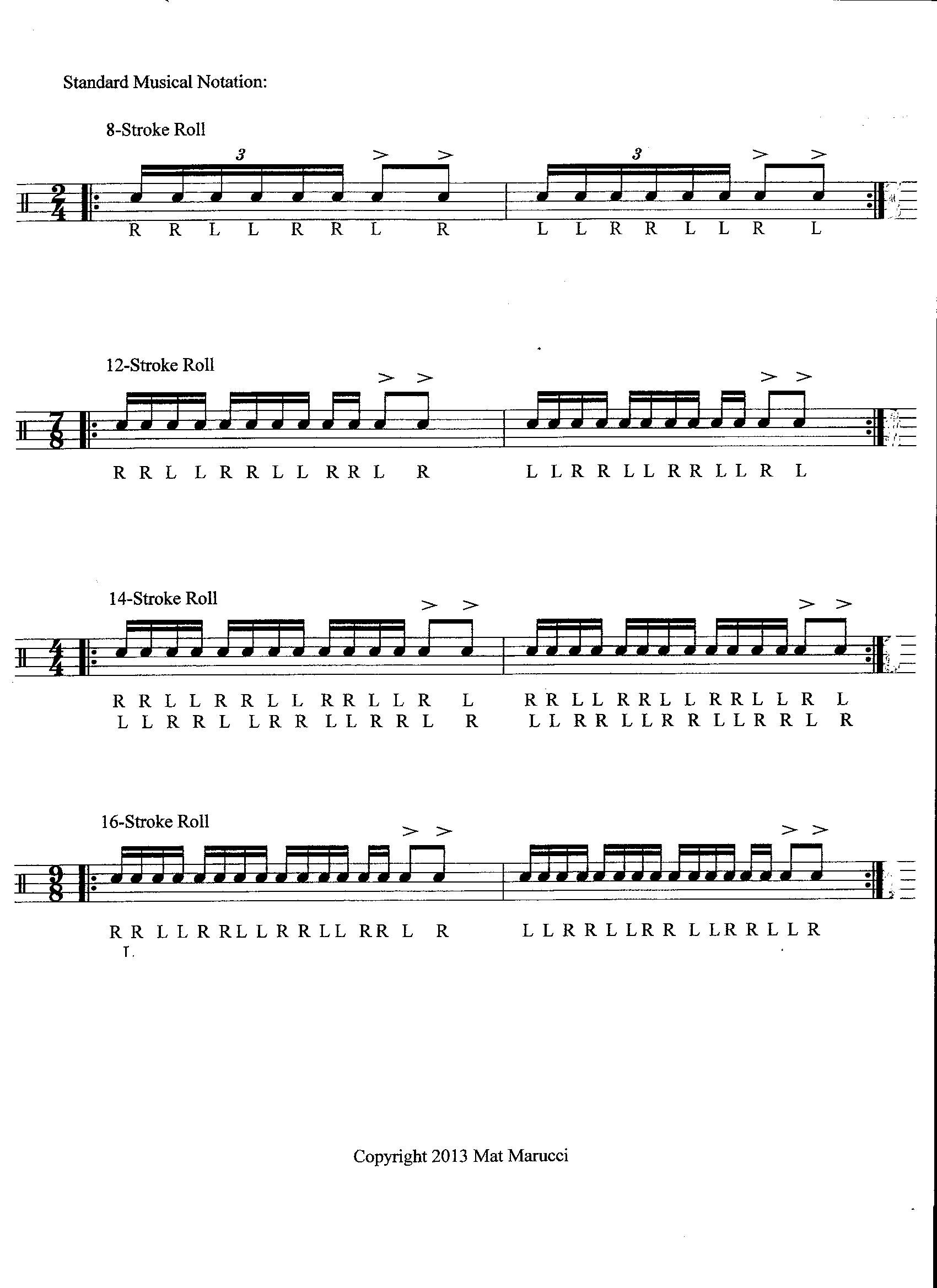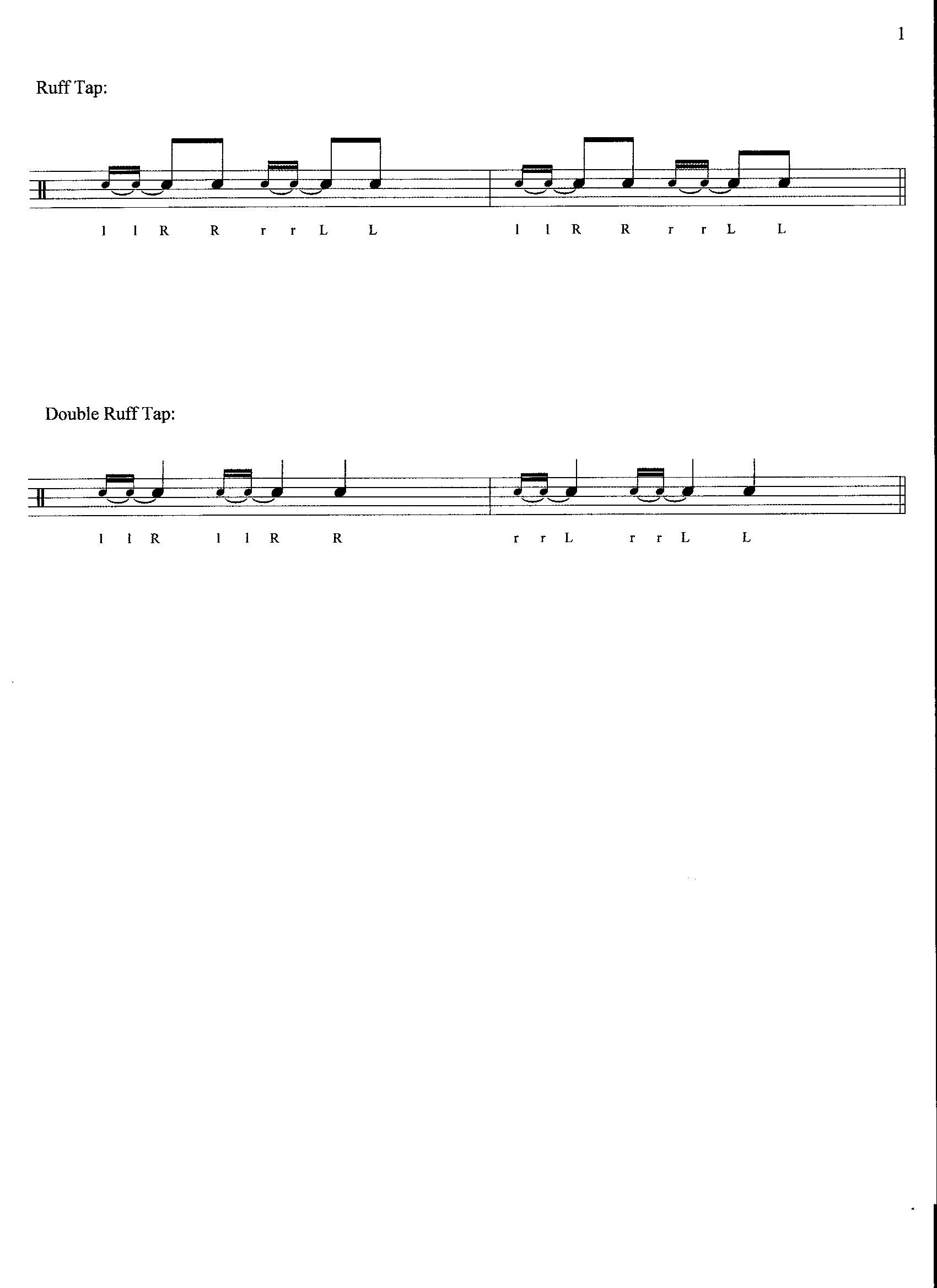The Rolls
I am always looking for something new in the world of drumming and drum technique and try to find something different to play or practice every day. In doing so, I have come up with questions that I sometimes think need mentioning or development.
We all know the standard short rolls included in the “Standard 26 American Drum Rudiments” and the Percussive Arts Society’s “40 International Rudiments” which are the 5-Stroke Roll, 7-Stroke Roll, 9-Stroke Roll, 10-Stroke Roll, 11-Stroke Roll, 13-Stroke Roll, 15-Stroke Roll and 17-Stroke Roll.
But what happened to the others that are missing: 8-Stroke, 12-Stroke, 14-Stroke and 16-Stroke Rolls? These four rolls not only add another dimension to our playing but the 12-stroke fits well into the 7/8 time signature while the 16-stroke fits well in the 9/8 signature.
You will see there are three examples of how to play each roll. First, there is the simple notation in a standard musical context. Second, I indicated how the rolls would be notated in as a rudiment in their respective time signatures. Third is how that rudimental notation would be played.
Play around with these new rolls and you will find that they work real well when playing solos on the snare drums, especially playing over the bar lines and in odd time signatures.
The Ruffs
As we know, the Ruff and the Drag are the same rudiment only with a different name. To avoid confusion with the Drags in the 40 International Rudiments I am naming my rudiments Ruffs.
To begin with, if you look at the Drag Taps as you know them you will notice that the tap is played with the opposite hand. This makes it actually an inverted Drag Tap. Compare the Drag and Drag Taps with the Flam Tap and the Inverted Flam Tap and you will see what I mean.
With my Ruff Tap and Double Ruff Tap, the tap is played with the down stick with same hand. This makes the rudiment more difficult due to the fact that when alternating and the grace notes are included, you will be playing four strokes with one hand. That will be the most difficult part. Naturally, just as any rudiment that has a single, double or triple designation, the difference between the Ruff Tap and Double Ruff Tap is the former is in duple meter while the latter is in triple meter.
Both rudiments should be played as hand-to-hand and one-sided (alternating and non-alternating). I know you will find a use on the drum set for both.
Good luck with both the Ruffs and Rolls. They’re great chops builders.
Copyright 2013 Mat Marucci





